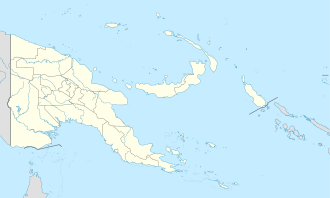| Schwimmer Airfield 14-Mile Drome  | |
|---|---|
| Part of Fifth Air Force | |
| Located near Port Moresby, Papua New Guinea | |
| Site information | |
| Type | Military airfield |
| Controlled by | United States Army Air Forces |
| Location | |
 | |
| Coordinates | 09°22′25.56″S147°13′56.82″E / 9.3737667°S 147.2324500°E |
| Site history | |
| Built | 1944 |
| In use | 1944 |
Schwimmer Airfield (also known as 14-Mile Drome) is a former World War II airfield near Port Moresby, Papua New Guinea. It was part of a multiple-airfield complex in the Port Moresby area, located north of the Laloki River.
Contents
The airfield was known as 14 mile for its distance from Port Moresby, and also known as 'Laloki' or 'Lakoki Drome' for the river to the northwest of the airstrip. It was officially renamed "Schwimmer Airfield" on November 10, 1942, in honor of Charles Schwimmer, who was lost in his Bell P-39 Airacobra intercepting Japanese aircraft over Port Moresby.

